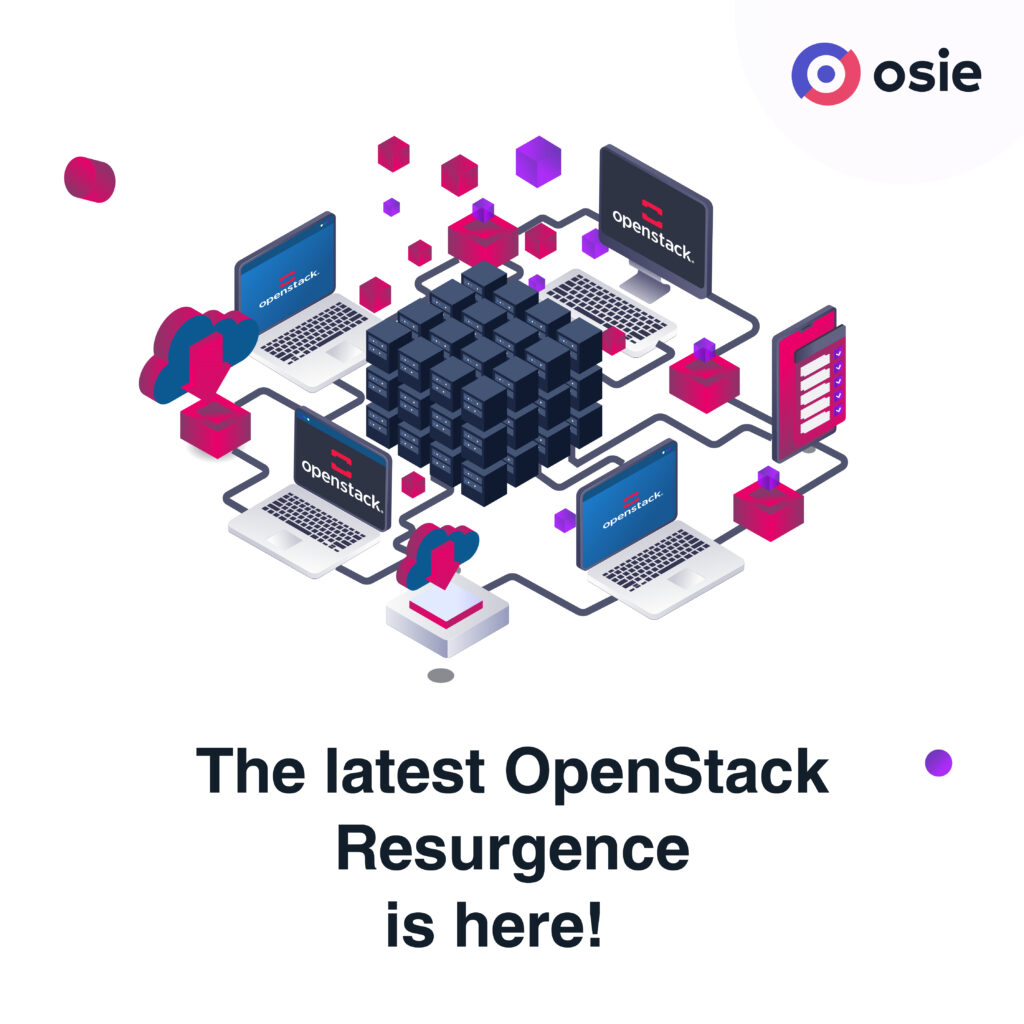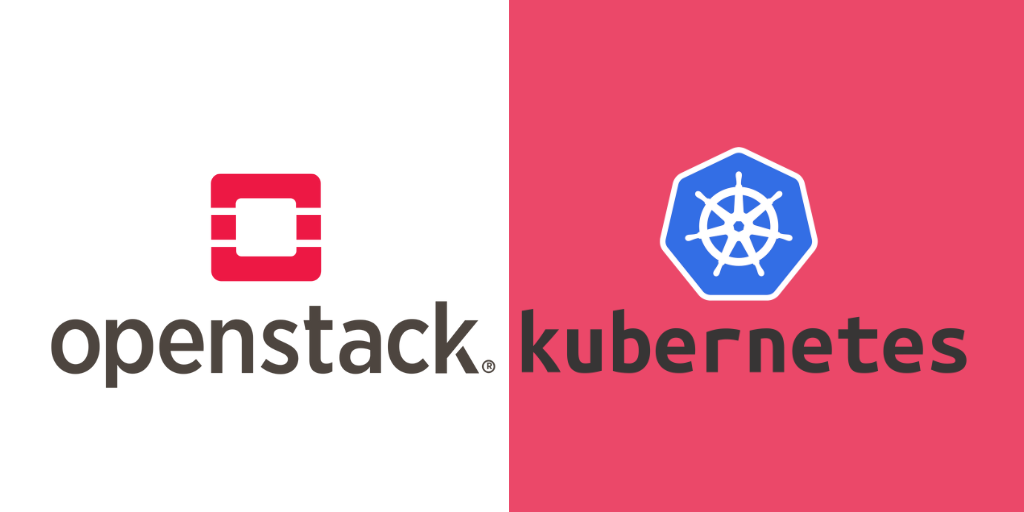The Case for OpenStack in 2025
Broadcom’s licensing changes have played a significant part in OpenStack’s latest resurgence. Companies are opting for VMware alternatives. Will we see sustained OpenStack momentum? Is OpenStack a worthy investment in 2025?

OpenStack turns 15 this year, just in time for its third resurgence.
The first wave occurred between 2011 and 2012 when Rackspace and NASA launched OpenStack.
Telecommunication companies spearheaded the second renaissance (2015 to 2016) as they sought technologies to support 4G and 5G infrastructure.
The latest resurgence began in 2024. Broadcom’s licensing changes played a significant part, and companies are opting for VMware alternatives. It’s not the only factor, though.
In this article, we explore what makes OpenStack a worthy investment in 2025. Will we see sustained momentum?
Is OpenStack a more viable option because it is open source? What are the advantages of a Kubernetes and OpenStack stack?
Are there companies that have successfully built on OpenStack over the years? Or seen massive benefits from migrating from VMware?
Table of contents:
- The open-source advantage
- OpenStack + Kubernetes: A powerful architecture
- Real-world success stories (use cases and examples)
- VMware to OpenStack: Strategic considerations
- Final thoughts
1. The open-source advantage
Being open source gives OpenStack an enormous advantage. There is no vendor lock-in, you get support from large open-source communities, and the software is customizable to your user’s needs.
No vendor lock-in
With open source, you never have to worry about vendor lock-in. You can choose one or more vendors for specialized and customized support.
You also have access to a large open-source community of contributors, maintainers, experts, and enthusiasts to help you solve any problem you are facing. The community is highly likely to have encountered your use case.
Crowdsourced innovation
Open source also fosters innovation. People in the open-source community share their creativity, solutions, and even intellectual property. Such collaboration creates modern solutions that can help you meet customer needs.
Cost savings
Companies can see significant cost savings as well. There are no limiting licenses to pay for when you work with open-source software.
You also never have to worry about understanding complex pricing models or getting sidelined by a bill you weren’t aware of.
Well-structured open source projects
Open-source projects are well-structured. They have standardized APIs and SDKs, integrations, documentation, and contribution procedures. They also have well-documented reviews before the new code is merged into the main code base.
Organizations like the OpenInfra Foundation ensure that open-source projects maintain open standards. The OpenInfra Foundation’s philosophy is based on the four opens: open source, open design, open development, and open community.
The OpenInfra Foundation has announced plans to join the Linux Foundation. This strategic move means that businesses can benefit from an even stronger open-source ecosystem.
Frequent bug fixes and releases
Open-source contributors can quickly identify and solve issues with software. There are also frequent releases that fix bugs and introduce new features.
For instance, OpenStack announced the Epoxy release in October 2024 and plans to complete it in April 2025.
Transferable knowledge
When your staff has open-source knowledge, it is easy for them to transfer it across different vendors. Therefore, the learning curve is not as steep as when knowledge is exclusive to a single proprietary vendor.
The fact that OpenStack is open source at its core makes it an advantageous option for enterprise use cases.
2. OpenStack + Kubernetes: A powerful architecture

A fully open-source architecture can be an excellent choice for enterprise use cases. You can combine large open-source projects such as Kubernetes and OpenStack, allowing you to reap the benefits of both.
Support diverse workloads
With OpenStack and Kubernetes, you can run containers, VMs, on-prem, and bare metal workloads on the same infrastructure. You don’t have to split up your workloads and manage them using different infrastructure providers.
Take advantage of both Kubernetes and OpenStack features
Kubernetes super powers OpenStack. You can package OpenStack services as containers, allowing for more precise deployments, scaling, and management.
OpenStack components also benefit from K8s’ features like monitoring, self-healing, and administration.
K8s’ automated scaling and management are versatile enough to accommodate the complex and shifting demands of cloud infrastructure, making it easier for cloud administrators to manage their cloud environments.
Conversely, you can use OpenStack services to manage K8s cluster lifecycles. OpenStack can provision virtual machines and bare metal servers on which K8s is deployed.
Use similar tools across the entire architecture
You can use the same workload management tools, reducing the complexity of managing your infrastructure.
You can also use projects from either software ecosystem in the same infrastructure. For example, OpenStack Neutron can serve as a network microservice for virtual machines, bare metal servers, and containers.
Easily transition to a container-based architecture
With OpenStack and Kubernetes, you can transition from a virtualized OpenStack architecture to a container-based architecture, building truly cloud-native applications.
OpenStack and K8s allow for more isolation between architectural layers and more precise resource management. You can migrate or scale without interrupting business flow.
Improve operational expenses and overhead
OpenStack and K8s significantly improve operational expenses and overhead. Teams can leverage cloud-native tools to streamline their deployments, monitor system health, and perform system updates with minimal disruption.
Because there are fewer manual interventions and quick responses to changes, the infrastructure remains highly optimized.
Gentler learning curve
K8s and OpenStack allow for a gentler learning curve for operators with cloud-native knowledge, which can result in improved efficiency and foster innovation.
Additionally, it’s easier for teams to implement cloud-native best practices, such as CI/CD, further automating life cycles.
Climate first
If you’re a climate-first business, you can leverage OpenStack monitoring tools and K8s. For example, K8s has an open-source tool (KEIT) that estimates the carbon emissions of a Kubernetes cluster.
You can also integrate the Carbon Aware SDK with custom K8s solutions.
With K8s and OpenStack, you can create a reliable, robust, and agile infrastructure. Take full advantage of the strengths of containerization and virtualization. Easily adapt to the evolving needs of businesses and enterprise use cases.
3. Real-world success stories (use cases and examples)
If you choose to run on OpenStack, you are in excellent company. Household names like Walmart have been running on OpenStack for about a decade.
In 2016, Walmart had over 170,000 cores running on OpenStack. OpenStack fit into the Walmart agile culture and worked in tandem with OneOps, their cloud management platform, to reduce costs and streamline their development and deployment processes.
Today Walmart has more than 10,750 stores in 19 countries worldwide. Its tech wing, Walmart Global Tech, which was behind Walmart’s OpenStack uptake, continues to redefine retail tech.
In Europe, companies like BTGroup, Retelit, VEXXHOST, T-systems, and Osie have also built on OpenStack.
BT Group used Canonical OpenStack to build a network that has allowed them to provide 5G access to 75% of the UK population.
Retelit uses OpenStack as the infrastructure foundation for their cloud platform, OCloud, integrated with other open-source technologies like Kubernetes and Docker.
VEXXHOST has been running OpenStack since 2011. VEXXHOST Private Cloud is OpenStack-powered and provides API compatibility for OpenStack core services.
T-Systems offers an OpenStack-based private cloud solution that can be easily combined with their public cloud offering.
Osie has built an OpenStack billing dashboard on Kubernetes and OpenStack, providing a much-needed solution for cloud, IaaS, and PaaS providers. You don’t need to build your own billing solution if you are using OpenStack. You can read our comparison with Fleio to see why Osie is a fantastic option for you.
More companies are moving to OpenStack amidst licensing changes by VMware.
GEICO migrated their VM workloads in 2024 using VEXXHOST’s Migratekit tool. This move has allowed them to customize their infrastructure to fit specific use cases. They can also integrate several open-source tools as needed.
The Hut Group also used MigrateKit for their VMware to OpenStack migration. They have been able to achieve significant cost savings, and they can now manage their workloads more flexibly.
A Fortune 500 company is migrating 40,000 VMs to Platform9’s Private Cloud Director using vJailbreak. Each VM will cost $35, and they are migrating over 200 VMs daily, with a goal to complete the migration in March 2025.
All these companies are proof that OpenStack is quite capable of handling enterprise requirements.
4. VMware to OpenStack: Strategic considerations
The VMware licensing saga rages on. While pricing and product changes have been important, Broadcom’s move is only accelerating a growing trend.
Companies enjoy working with vendors they trust. They can focus on their core business and leave aspects like support for the vendor to handle. They are familiar with SLAs and procurement processes. However, companies also enjoy control and flexibility over their business technologies and infrastructure.
When drastic changes occur, they stir up reflective points for businesses. What do they really need? Are the extra costs really worth it? Have they even had the control? Is the tech working for their use cases?
Moving architectures is a complex and time-consuming process that could get costly. But companies are willing to do it to have the flexibility that they need for their users, customers, and business needs.
If you’re among the 74% of companies looking for VMware alternatives, there are things to keep in mind.
Migrating VMware naturally calls for you to check what features other alternatives have and how they map to VMware. In fact, OpenStack has a great feature comparison with VMware.
Beyond moving architectures, you need to take the opportunity to reevaluate your business needs and requirements. What tech actually serves them? What costs are really necessary?
You also need to think about the operational aspects of the migration. There is a good chance that your staff have become VMware experts over time. Moving to OpenStack means a learning curve for them. They may need to reskill.
Having vendors to support the migration is a smart move. It will make the process less painful and give your team time to learn OpenStack.
You do not have to move all your workloads at once. You can phase the migration over a period of time for a more seamless one.
Take time to evaluate the tools and vendors that best support your migration. OpenInfra member companies are a wonderful place to start. You can also look into tools like vJailbreak and MigrateKit.
Thinking through aspects like business needs and requirements, staff knowledge, and the length of time you need to do your VMware to OpenStack migration can go a long way in making the process more bearable.
5. Final thoughts
OpenStack has seen wide adoption over the years, with some intriguing peaks fueled by various factors. The fact that it’s open source at its core means that businesses can customize it to meet their requirements.
Companies can benefit from large open-source communities that ensure that the software remains reliable and up to date.
Many businesses and organizations have used OpenStack for enterprise workloads for years, proving that it’s a technology you can rely on.
When combined with Kubernetes, you build a truly open infrastructure that gives you optimal flexibility, cost savings, and customizability.
As more organizations continue to seek open alternatives for their infrastructure, OpenStack provides a community of vendors to choose from.
The important thing is to ensure that you understand your business requirements so that you can choose the best infrastructure.
6. Resources
Building the Open Infrastructure Blueprint White Paper – https://openinfra.org/open-infrastructure-blueprint-white-paper
The Sudo Show Podcast, Episode: OpenStack Renaissance: https://player.fm/series/2712291/441932499
From VMware to OpenStack: How Open Source is Rebuilding Virtualization: https://www.youtube.com/watch?v=-ZeXKyV0sW4